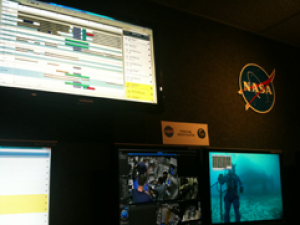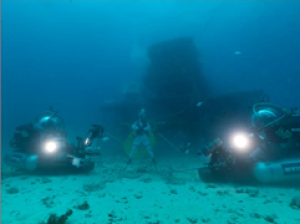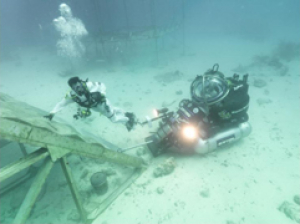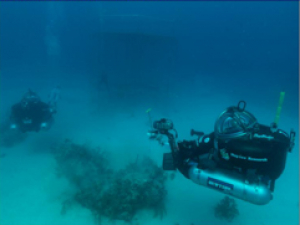



University of Houston SICSA graduate student, Abraham Chavez got first hand experience on how crew performance and productivity may be affected in a Near Earth Asteriod (NEA) while participating in NASA Extreme Environment Mission Operations 15 (NEEMO 15) off the shore of Key Largo, Florida. The NASA Extreme Environment Missions Operations Project sends groups of NASA employees and contractors to live in the Aquarius undersea research station for up to three weeks at a time. This year’s NEEMO 15 crew consisted of commander Shannon Walker-NASA Astronaut; Takuya Onishi-JAXA Astronaut Candidate; David Saint Jacques-CSA Astronaut and Steve Squyres-Golwin Smith Professor of Astronomy, Cornell University. Crew performance and productivity data during near earth asteriod extra-vehicular tasks (including intra-vehicular tasks inside the habitat) and behavioral human performance emergency scenerios inside the habitat with different communication delays were gather by the graduate student that will help with designing future advanced mission planning tools required for near earth asteriods (NEA) architecture. Next generation planning tools could assist deep exploration crews with an autonomous planning system that could assist them with accomplishing nominal tasks dealing with spacecraft structural, thermal and power data tracking to mentioned a few as well as providing the crew with an advanced viewer timeline for the crew to see and execute from while in course to a near earth object or other destinations. Additionally, this autonomous system could potentially design a two-three day mission to an asteroid or a 200 day mission to Mars while allowing the crew to focus more on payload experiments while maximizing crew time. This advanced planning tools will also be required to display power, thermal and structural constraints and data that could be display by the same tool.
